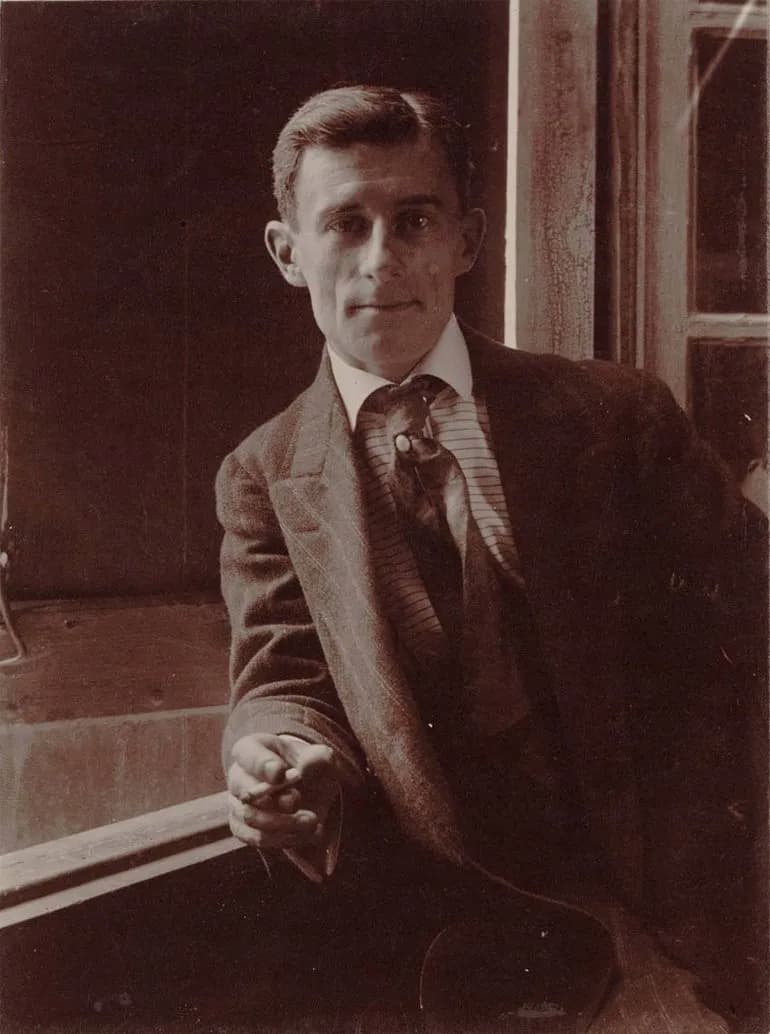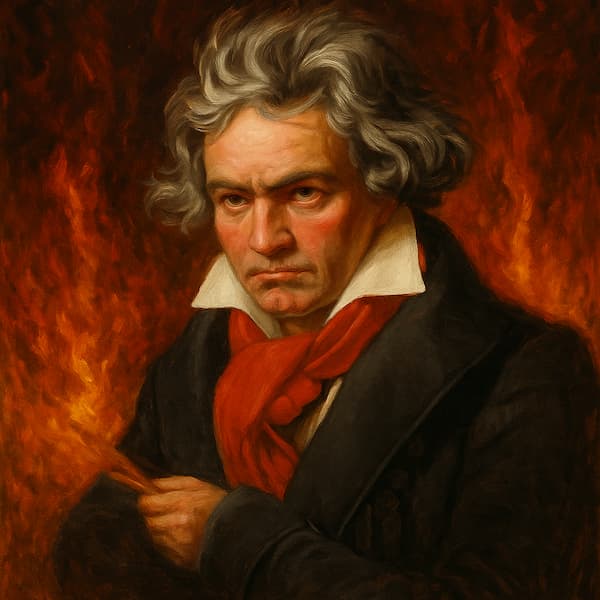Richard Wagner (1813–1883) was a revolutionary in German music and in opera. For opera-goers, the advent of Wagner onto their stages was cause for comment, particularly in the caricature sections. In images, the cartoonists could take aim at all they saw as false or inflated in the music and person of the composer.
The French caricaturist André Gill (1840–1865) had a style that depicted enlarged heads on tiny bodies. He drew Wagner determinedly breaking a listener’s ear by hammering a note into place.
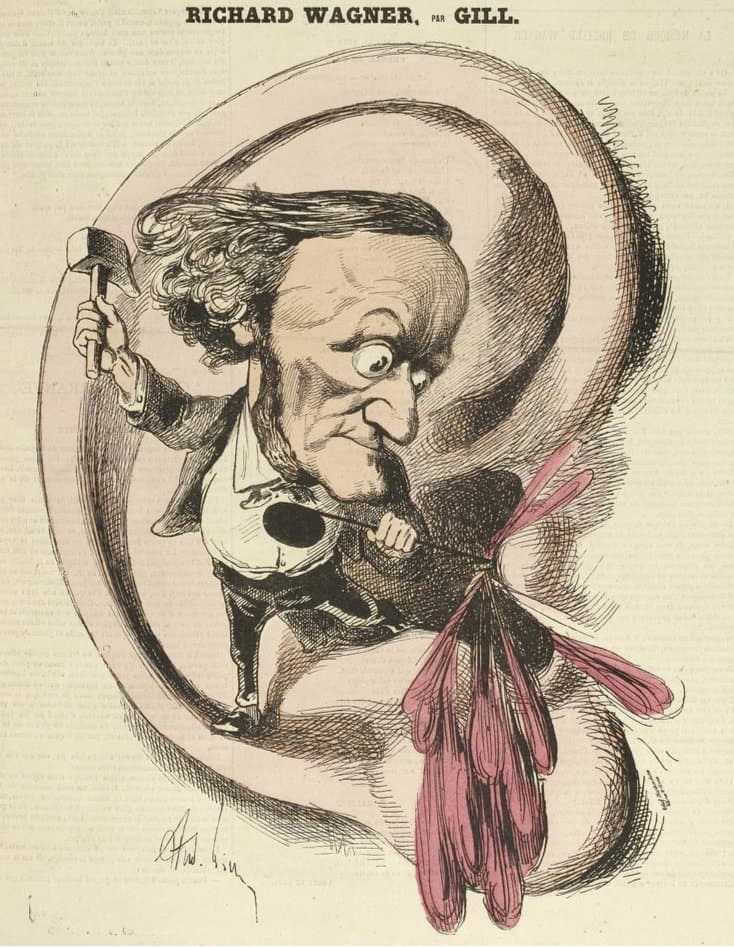
Gill: Wagner, 1868
8 years later, Gill took on “The tetralogist” Wagner by showing him relentlessly banging a pot and being served apple cider by a monkey. Wagner, in the caption, dismisses the French “The French are a people of monkeys” and the cartoonist saying that the ape people now have the art of the scream, which will easily compete with Wagner. Wagner was quoting Voltaire, who called the French a mix of monkeys and tigers (Wagner: Art and Politics, 1868), but the French quickly took the quote out of context.
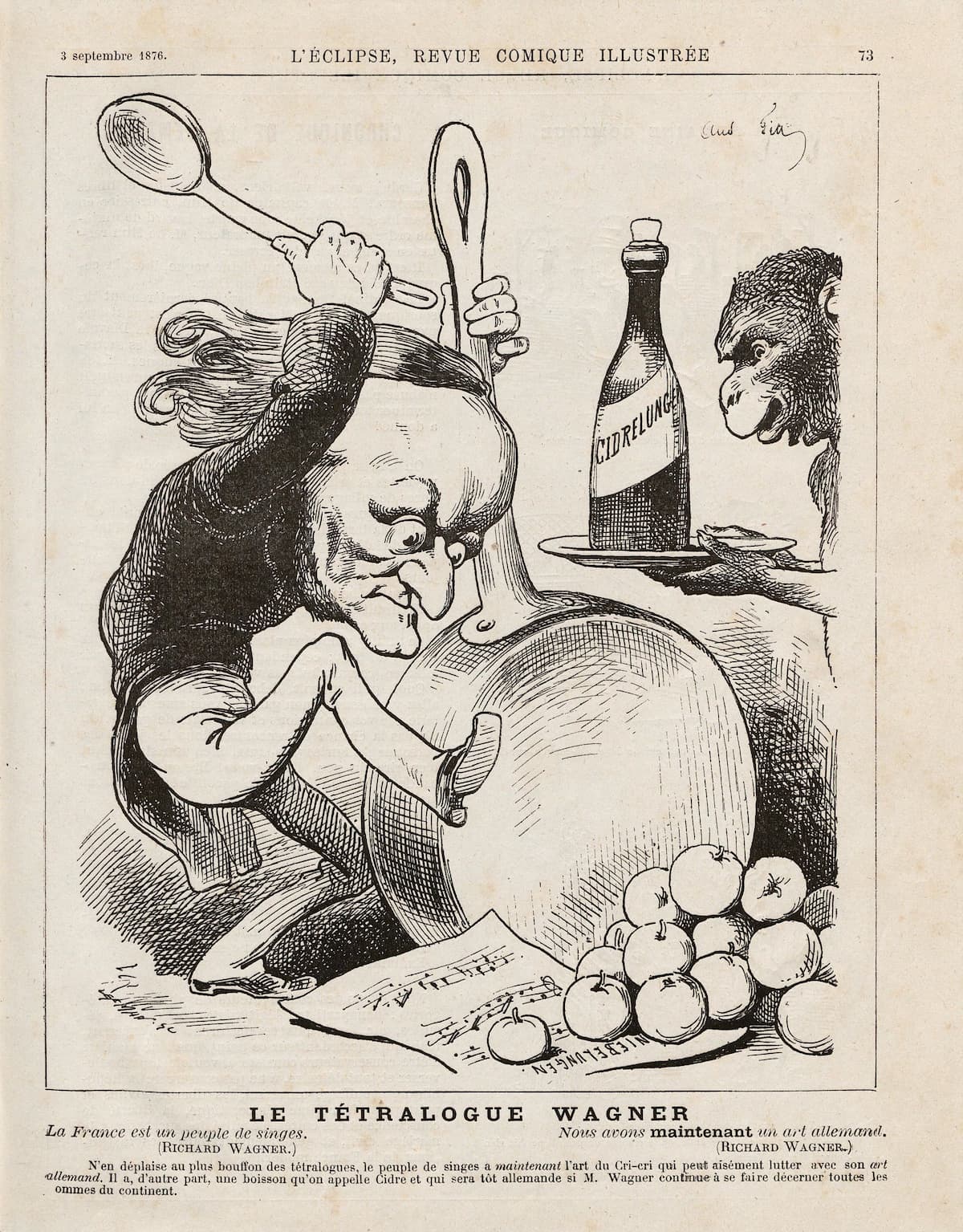
Gill: Le Tétralogue Wagner, 1876 (L’Eclipse, September)
Another caricature helpfully shows how to create a shadow image of Wagner, although it does require holding your hands in seemingly impossible positions (and the note that the beard should be made with a piece of folded paper).
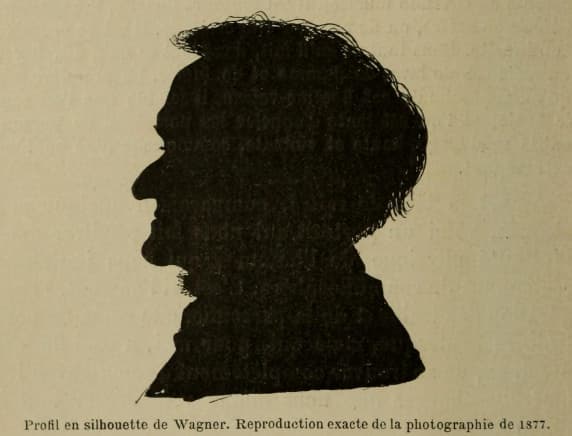
Trewey: Silhouette of Wagner, 1877
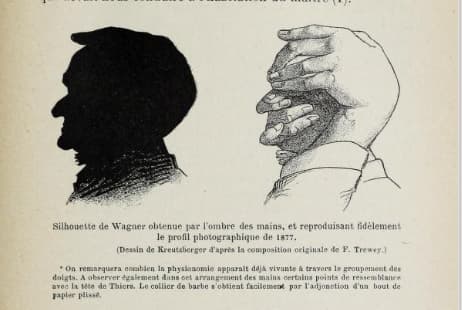
Kreutzburger: Silhouette de Wagner (after Trewey), ca. 1877
The overwhelming use of brass and percussion in Wagner’s scores led to several caricatures including this one showing Wagner beating his own drum for Tannhäuser.

Blass: Wagner, inventor of the bass drum with musical grapeshot, indulging in his favorite exercise
Honoré Daumier (1808–1879) depicts an audience that has been forced ‘par ordre’ to listen to an hour of Wagner. They slouch, they fall asleep, they endure, battered by a hail of notes, wielded by an authoritative hand.

Daumier: A Munich. Après une heure de Wagner par ordre!!, 1868 (Le Charivari, July 8, 1868)
The downside of this is a complaint that Sleep (Morpheus) brings to Zeus – carrying his sack of poppies on his back, he’s out of job, replaced by Wagner.

Cham: Morpheus is out of a job, 1861
Another caricature, after the death of Wagner, shows him arriving in heaven and thanking the angels for the receptions but complaining that there aren’t enough trumpets and drums – you’ll never get a production without them!
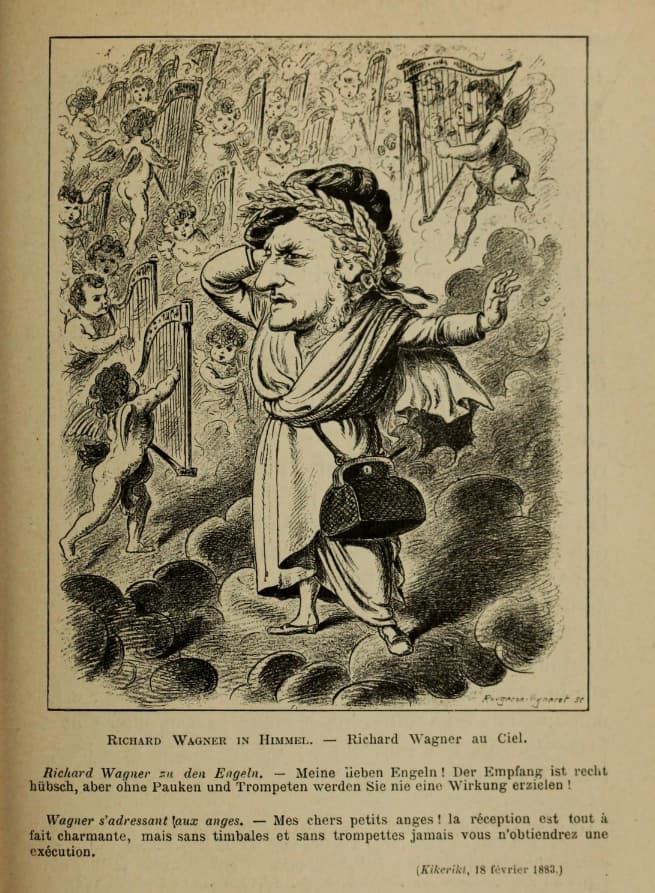
Wagner in Heaven, 1883
In a caricature after the death of Wagner, the theatre director Pierre Gailhard (1848–1918), director of the Paris Opera, and the French conductor Charles Lamoureux (1834–1899) bombarded Paris in 1891 with Wagner. They are dressed in ‘the livery of Wagner’, with ‘W’ embroidered everywhere. Wagner is depicted between the two mighty horns as a ghostly shadow. Written under the cannon is ‘Ritt’, director of the Paris Opera, for whom Gailhard worked.
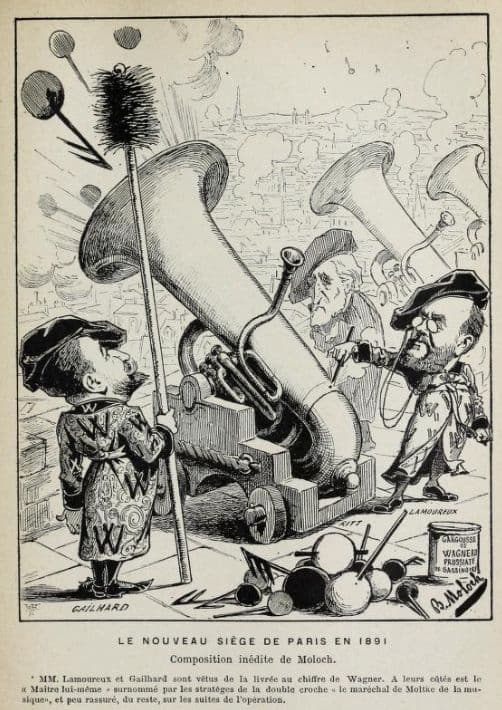
B. Moloch: The New Siege of Paris in 1891
In another depiction of the Opera, Pierre Gailhard and Eugène Ritt (1817–1898) are shown on the peak of the Paris Opera holding a drum and a trombone (more brass and percussion!). Between them, holding a two-handed saw is Wagner. This caricature followed the premiere of Lohengrin at the Opèra.
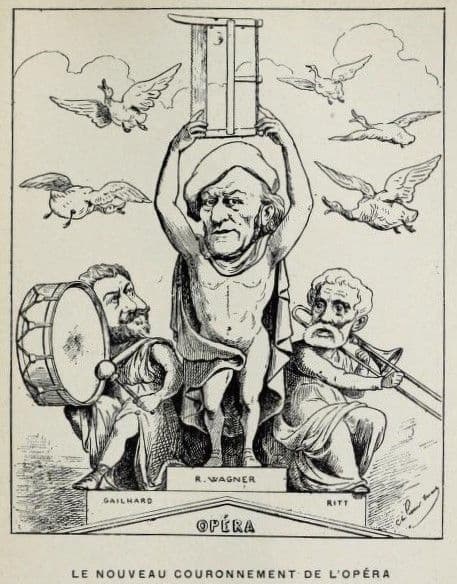
Gilbert-Martin: Le Nouveau Couronnment de l’Opéra, 1891 (Le Don Quichotte, vol. 18, no. 399)
Another assault with brass, but this time depicting the field of battle as Bayreuth. Wagner is shown with the support of Hans Richter, in the foreground, the conductor at Bayreuth. Between Wagner and Liszt on the top left is Cosima Wagner. Below Wagner is Wilhelm Jahn, director of the Vienna State Opera, and the bass-baritone Emil Scaria, who sang in the premiere of Parsifal. We also have the dragon from Siegfried and Brunnhilde’s horse Grane just above Cosima. Other personalities down the left side include the German Emperor Louis II, the composer Johann von Herbeck, the Rhinemaiden Lili Lehman, actor Josef Lewinsky, and pianist Anton Rubinstein.
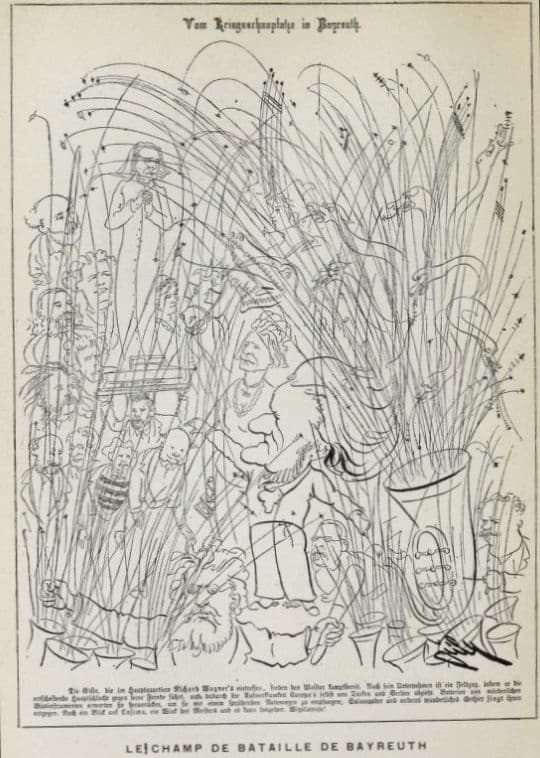
Klie: The Battle of Bayreuth, 1876
We’ll close with some of the greatest entry music of all time.
Richard Wagner: Die Walküre, Act III – Ride of the Valkyries (London Philharmonic Orchestra; Mark Elder, cond.)
For more of the best in classical music, sign up for our E-Newsletter

